From the Primary School on Wuding Road, through the Secondary School in Songjiang, the Founders have always taken a prudent and meticulous approach in choosing each campus’ location. Over the years, much effort has been spent on choosing locations for campuses that are not only visually beautiful but also promote learning through carefully considered design.
Finding a home for the Secondary School Campus
Over the past decade, the Secondary School campus has settled into its own unique identity and grown in student numbers - from 75 pioneering students in the school’s first year to over 400+ students today. Currently, the school offers both boarding and day facilities for students in Years 9-12, but during those early years, the campus also acted as the middle school for students from Year 6 onwards. With these changes, for many it is easy to forget that the first Secondary School campus was based elsewhere – Jinshan District, Shanghai.

Shortly after work began, starting with the purchase of trees and shaping of the newly purchased land. However, part way through this process in July 2010, the land in Jinshan was found to be unusable due to circumstances beyond the control of the school – leaving the school’s Founders and leadership team just a year to find and establish a physical campus. Despite the setback, the Founders and the school resolutely continued searching for a home for the Secondary School, with the goal of opening in 2011.
In a twist of fate, during an unrelated meeting with government officials from Songjiang, Professor Anna Sohmen Pao explained the problem. The official from Songjiang immediately invited Ms. Sohmen to visit what would soon become the home of Pao School’s secondary division. Despite reservations due to concerns about the expense of updating the school’s fittings, the decision was quickly made to take the campus to ensure the future of the Secondary School.
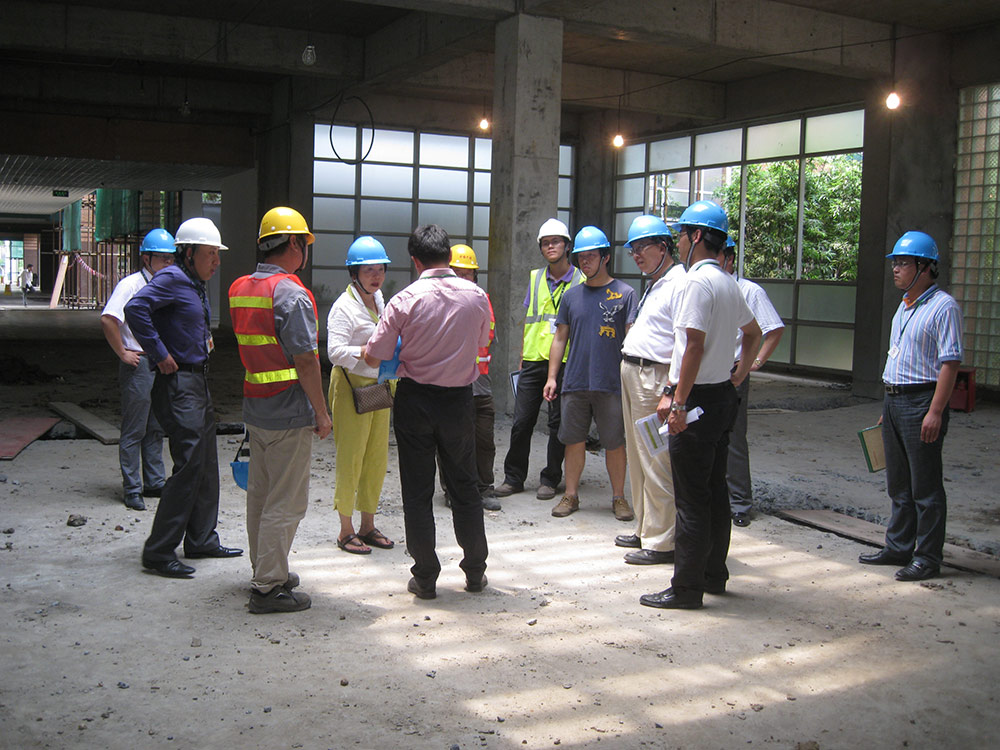
Professor Anna Sohmen Pao supervises the construction of the Songjiang campus
After changing campus, the school only had a year to prepare for the incoming students. Over that time, there were a number of problems with the new facilities, particularly as the Songjiang campus was not purpose-built for Pao School and there were a number of changes that needed to take place. In addition, there were some structural issues that needed to be fixed. For example, the windows in the hallways had been sealed poorly, leaving the wind to howl through the hallways. The middle of the library floor had sunken partially due to underground water. Despite this, the Founders and leadership team persevered, eventually opening the campus to students in October 2011.

The three Founders, team and students at the opening of the Songjiang campus
Since opening, the school has continued to welcome improvements to Songjiang campus, this year including dorm refurbishment, cafeteria upgrades, and changes to the fire protection equipment due to updated governmental regulations. The school has invested ample time and money into developing Songjiang campus, not only ensuring that the quality of construction is high but also creating a campus with the best learning environment possible.
Developing a New Culture and Programme
Alongside the physical development of the campus, the school had to create a suitable academic programme, whilst also developing a structure for the boarding and CCA programmes. In addition, as the school was a blank canvas, the first students, teachers and parents were fundamental in planting the seeds for the community-oriented and active campus culture present today. During the first five years at Songjiang, including that first year of campus development before the students entered the school, the campus was led by Executive Principal Tony Jaccaci and his team – who, as led by the Founder’s vision, lay the groundwork for the school as we know it now.
A New Academic Programme
As a school with experimental status, that is, a school with more flexibility in teaching than standard schools, Pao School had some key decisions in its early days to make regarding the academic pathways that would be available to the school’s students. At the core of the programme, the school had to meet the government’s curriculum requirements, but would also build on this content to prepare students for higher education abroad – with both the needed linguistic and academic skills. In 2014, Pao School was approved by the Shanghai Municipal Education Commission to become one of the first secondary schools to trial international courses in Shanghai.
In order to decide which programme was most suitable, the school considered the skills the students would need to study abroad and eventually landed on the IB Diploma Programme (IBDP), which offers a breadth of choice in subject areas, rigour in its content, and international recognition at the tertiary education level. However, as the IBDP is to be taken in Years 11-12, there remained the question: Which bridge curriculum is suitable for the transition from the Chinese National Curriculum to IBDP? After much consideration, the school chose the IGCSE Programme. The school hired experienced educators, who were well versed in the IGCSE and IBDP programmes, in particular, Lee Sanders and Jayne Lund respectively. Alongside supporting the school’s ability to build strong curriculums, they also played vital roles in the school’s successful application for IGCSE and IBDP accreditation.
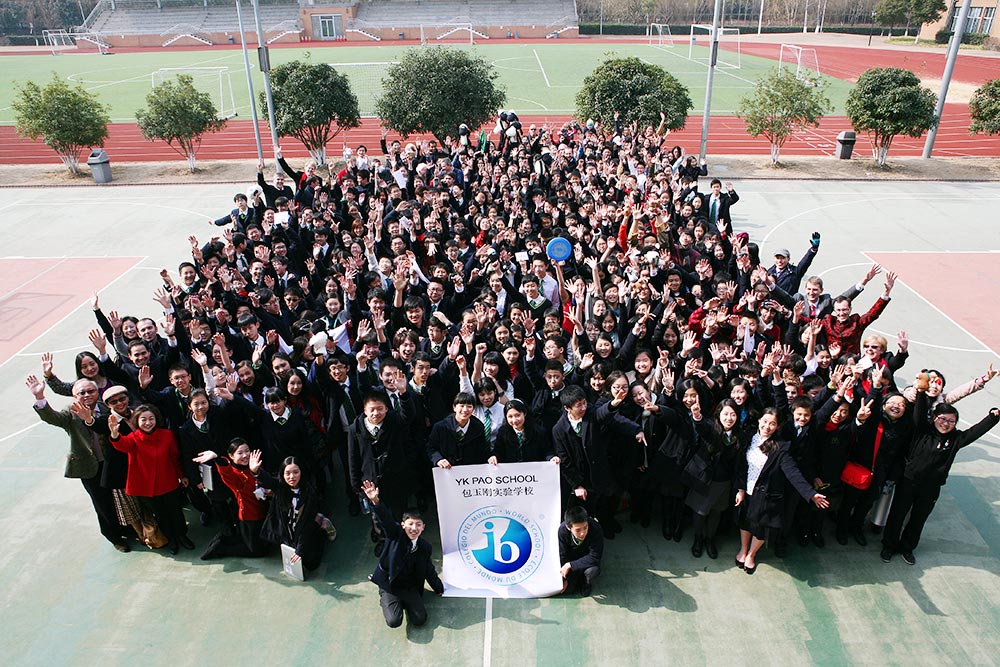
YK Pao School becomes an IB school
In the early years of Songjiang campus, an essential resource for the school was the Pao School Mentors, who still provide guidance today across all campuses. The mentors are retired, accomplished, Chinese educators, who are familiar with the Chinese curriculum and government requirements, in addition, the mentors are important sources of pedagogical knowledge and act as an indispensable resource for the school. In those early days, each teacher was paired with a mentor, who would support the teacher in giving feedback and advice for programme/lesson plan building.
A Programme for the Whole-Person
Alongside the cultivation of the mind, whole-person education also calls for the nourishment of the body and spirit. Therefore, as the school’s academic team was designing the Secondary School’s structure, great importance was placed on the development of the co-curricular and boarding programmes. As a boarding school, with multiple afternoon activities every day, the school had to develop a schedule for more of the day than the usual school.
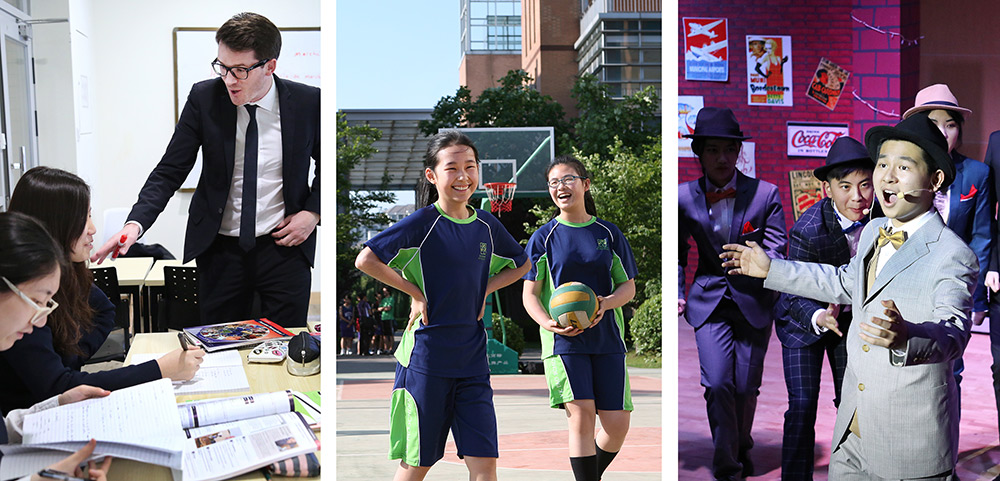
One important choice made in the formation of the Secondary School was to include a British-style boarding school system, with the aim of providing a rich and supportive environment where students learn outside the classroom and develop a range of skills including independence, initiative, and collaboration. The school also decided to have faculty members live within the dorms as dorm parents, which is unusual for a Chinese school. This allowed the teachers to model behaviour for students, forge stronger student-teacher bonds, and also build a wider sense of community at the school.

A Unique Cultural Blend on Campus
As with the school’s vision to both pass on traditions of Chinese culture, whilst fostering an international perspective, the Secondary School also had the challenge of cultivating a successful bilingual and multicultural campus. In order to create a truly cohesive community, it was necessary to build common ground and a core Pao School culture that started with the teachers. The school’s leadership therefore made concentrated efforts to promote integration between the school’s local and international teachers, with the faculty being evenly divided between Chinese staff and overseas staff from around the world.
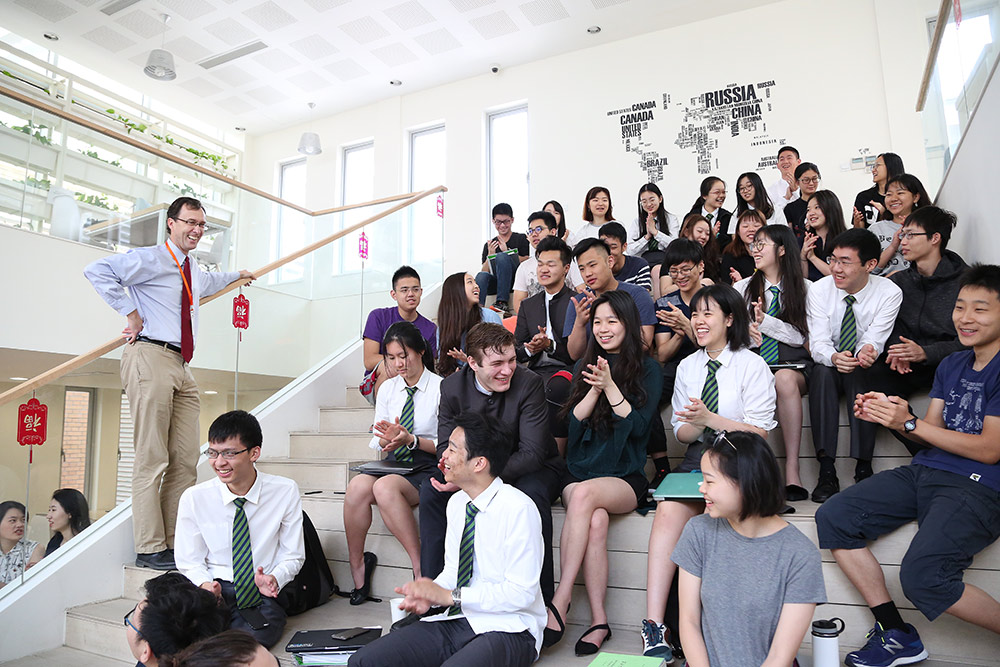
Tony Jaccaci and Year 12 students in the Oxygen Bar
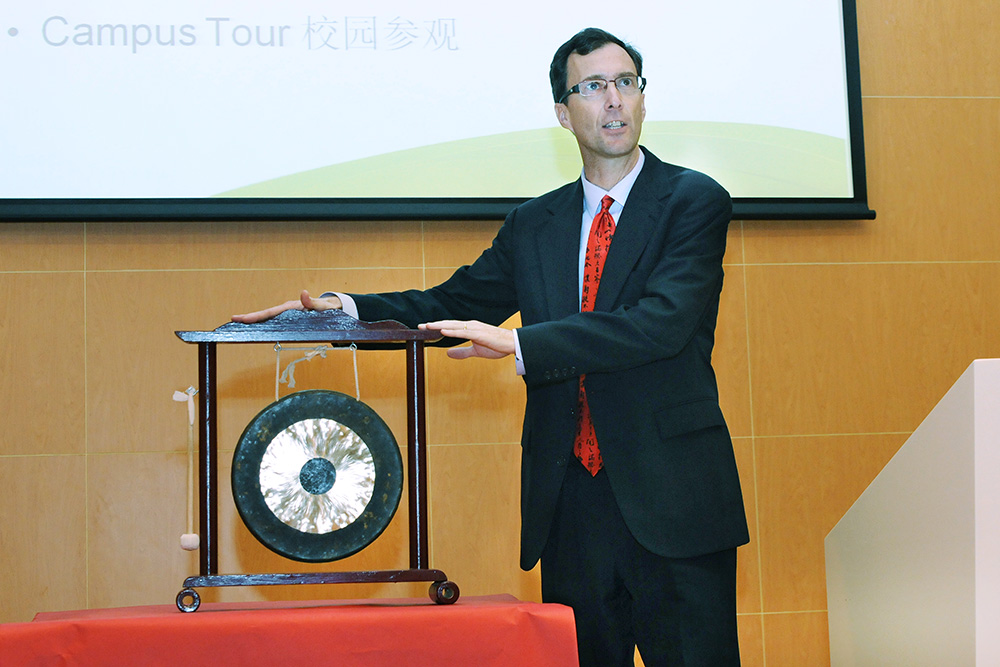
Tony Jaccaci sounds the assembly gong to start the next school week
Mr. Jaccaci, then Principal, chose to focus on cultivating an environment that encourages teachers to be both teachers and learners. On one side, the foreign teachers spent time being led to learn more about China, including Chinese language and culture, from local colleagues. On the other side, local colleagues learned more about Western classroom management strategies. In time, those early teachers created a core growth-oriented culture of cooperation, which continues to be passed on to new additions to the school.
“Pao School was something that didn't exist before, in lots of ways this truly was new, truly novel. It is a very unique and special type of institution. I feel very proud to have been able to work so hard. I've never really been part of such a collective effort to create something that was so unique and special before, and I believe the school will last for a long, long period of time.”
- Tony Jaccaci, Founding Executive Principal of the Secondary School
The First Graduates
In 2017, Songjiang saw its first class of graduates, IB results and university placements. The first set of results was excellent, with the Class of 2017 achieving an average diploma score of 34, compared with the world average of 29.8, and 12% of the class achieving 40 points or above, compared to the world average of 5%. Though the school was still young, the Class of 2017 were also admitted to a number of the top universities in the world, including Ivy League schools in the United States, the University of Chicago, Rhode Island School of Design and the UK's University of Oxford.
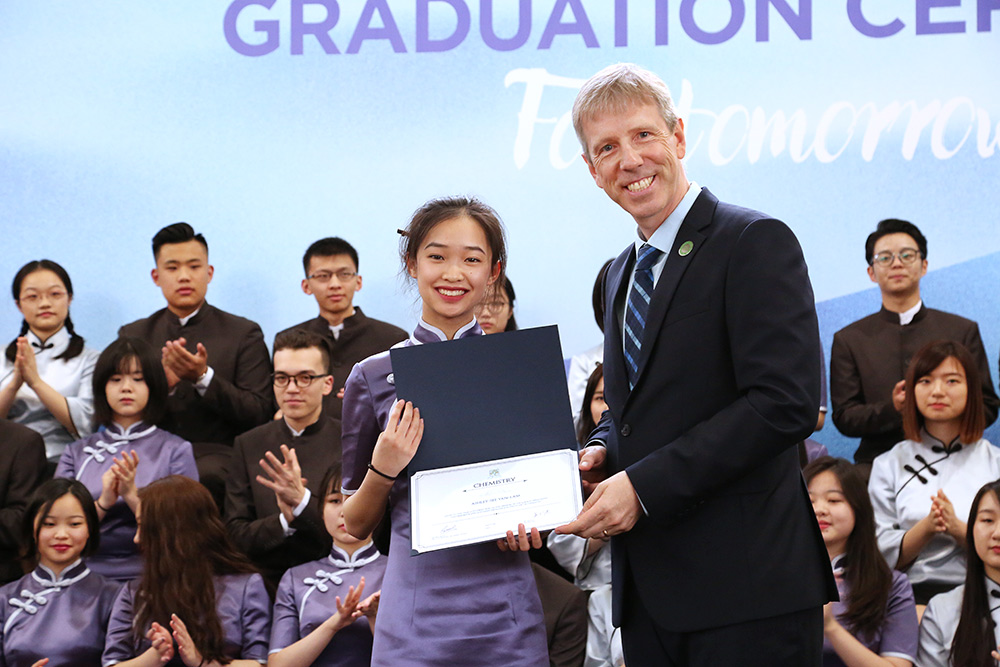
Paul Wood hands out subject awards at the Class of 2017 graduation ceremony
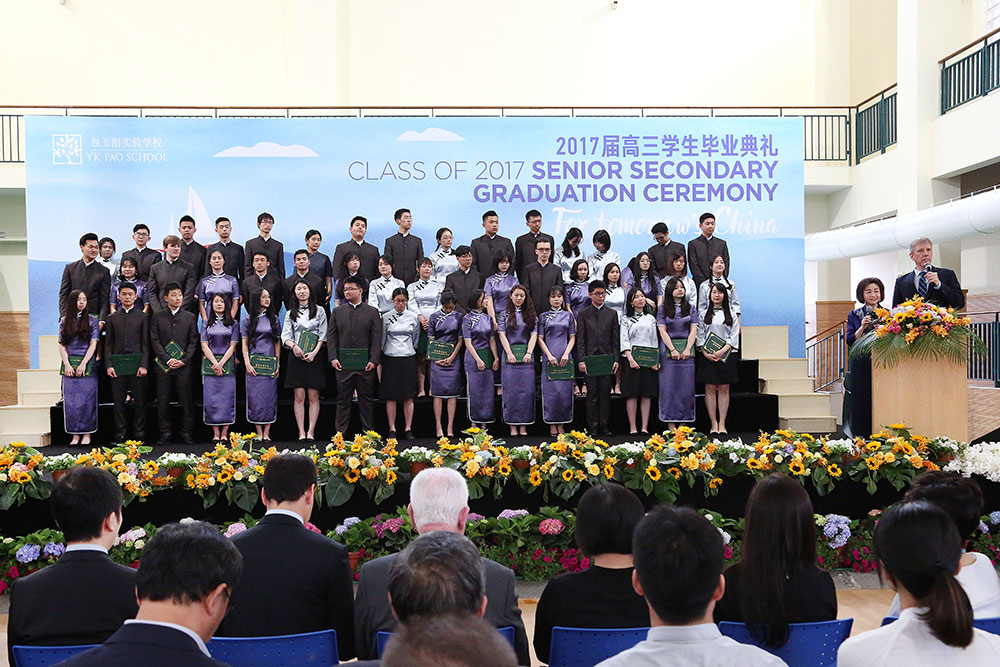
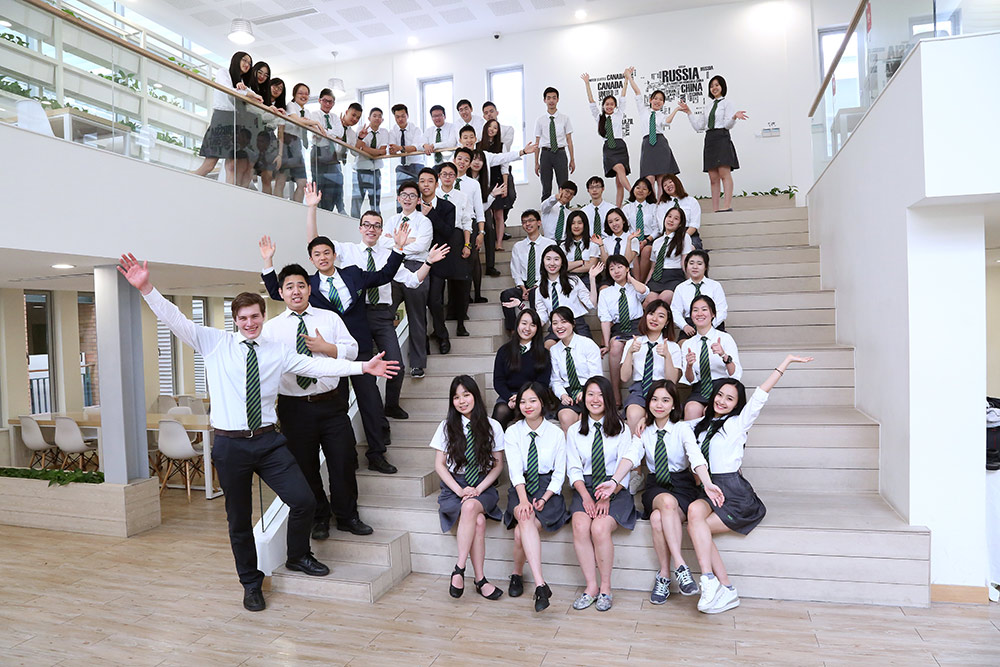
The first graduating class of YK Pao School in 2017
With this first graduating class, came the first graduating ceremony, which was organised by Paul Wood, Principal of the Secondary School from 2015-2018. Inspired by a typical American ceremony, with the addition of Chinese elements, such as performances from the school’s Chinese drum ensemble.
“Those families and parents who were such brave pioneers, I would say, they had such faith in the Founder’s vision that they committed their children early on to Pao School. They stayed with Pao School during challenging times as the school drew and developed.”
- Paul Wood, Principal of the Secondary School (2015-18)
Would you like to share a special Pao School memory with us? Click here